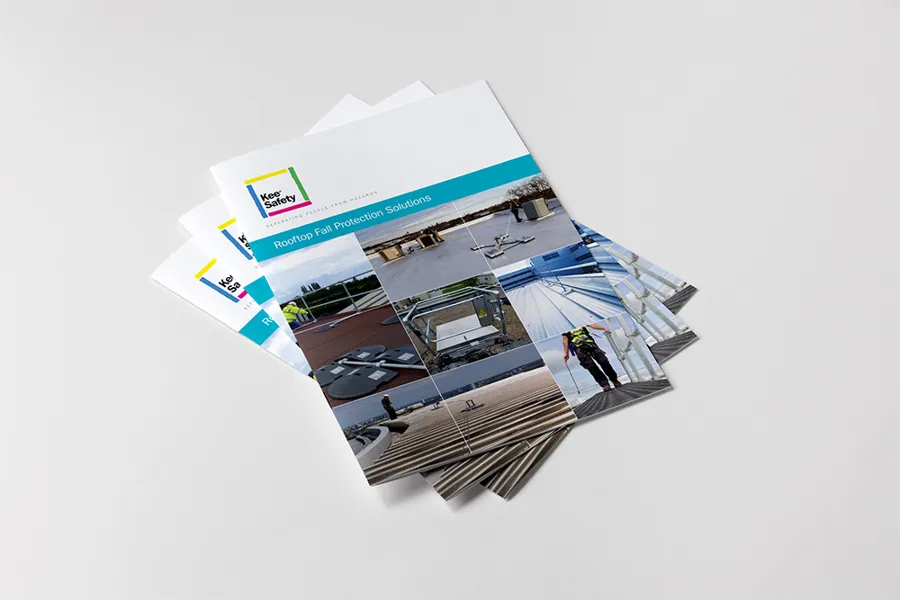
You are visiting the Canada Kee Safety website from United States. Would you like to go to the United States site?
An “anchor” has several literal and figurative meanings. It is widely known as the cable and weight cast overboard to hold a boat in place. It can also be a large business in a shopping centre that attracts customers who will then decide to visit the other stores.
Like a ship’s anchor, a rooftop anchor stands securely in place. Like a department store, it is a major attraction because it is the foundation of fall protection for rooftop workers using lifelines to inspect, maintain, and repair building services systems, wash windows, restore façades, or handle construction and equipment installation tasks.

National, provincial, and territorial standards require roof anchors to be used with lifeline systems, known as “active” fall protection equipment.
On the federal level, Canadian Occupational & Safety & Health Regulations SOR/86-304, Section 12.09(c) lists the components of these personal fall-protection systems (e.g., harnesses, lanyards, self-retracting devices, energy absorbers), including (k) Z259.15, Anchorage connectors. The anchors can be permanent or temporary.
National, provincial, and territorial standards for anchor strength vary, requiring load capacities between 16 to 22.2 kilonewtons (approximately 3,600 to 5,000 lbs.) or the ability to withstand at least twice the maximum arrest force in any direction.

Different types of roof anchors are available. Choose the anchorage system best suited for your roof, the tasks workers perform, and their frequency.
A) Permanent Roof Anchors are fixed anchor points (tieback, single-point, and horizontal lifeline anchors) that remain on the roof. They can be used for lifelines or suspended platforms.
Fixed anchors are attached to the underlying roof structure by bolting, casting, adhering, or welding and can be used on flat or low-sloped roofs with membrane or bitumen roof systems, plus green roofs and metal roofs.
B) Mobile Roof Anchors are non-penetrating, deadweight anchorage devices with a central pedestal for use on roofs with a slope of up to 5 degrees. The base weights each have more than 100 suction cups for added friction and holding power under wet or dry conditions.
Mobile anchors are easy to assemble with hand tools and can be placed virtually anywhere on the roof to address the task at hand. They are easy to reassemble and move to other roof sections; however, they are not designed for workers to suspend over the roof edge.

C) Mobile Rope Access Anchors are an enhanced version of mobile roof anchors that enable workers to suspend over the roof edge for cleaning, maintenance, façade repairs, construction, or other tasks.
Mobile rope access anchors combine a mobile roof anchor as a counterweight system with a frame support explicitly designed for mobile rope access. They are tested and inspected to Z259.15-17 for anchorage connectors and Z259.17-16 for selecting and using active fall protection equipment and systems.
D) Horizontal Lifeline Anchors are engineered, energy-absorbing systems with anchors that can be installed on membrane, structural, and metal sheet roofs—or overhead—and used with mobile anchorage devices.
Galvanized and stainless steel components provide corrosion resistance and long-lasting durability. An anchored horizontal lifeline system can support up to three workers at one time over a maximum span of 39 feet.

Professional safety experts can help you get started in knowing the regulations and selecting the type of anchor you need. They should also be consulted for installation, certification, and training.
Certified anchor bolt training will enable personnel to install, test, and inspect permanent anchor devices. Course instruction covers the roles and responsibilities of the system designer, installer, inspector, and user, as well as documentation after installation and inspections. Students will understand safety harness eyebolt fundamentals, personal protective equipment (PPE) combinations, and relevant safety regulations.
Whether your first thought of an anchor is a member of a relay race team or a news broadcaster, where rooftop safety is concerned, the names of permanent, mobile, rope access, and horizontal lifeline anchors should come to the forefront.
If choosing the regulatory-compliant anchorage system that best suits your roof type and worker tasks is challenging, call on the experts at Kee Safety. We can guide you through the regulations, anchor options, and engineering analysis through installation, documentation, and training.

Kee Safety: Your Fall Protection Experts
Kee Safety is the world’s leading fall protection expert. We engineer, manufacture and install fall protection solutions that safely separate people from hazards. Our OH&S-compliant products and systems are third-party tested and trusted to ensure consistent performance at the highest level.